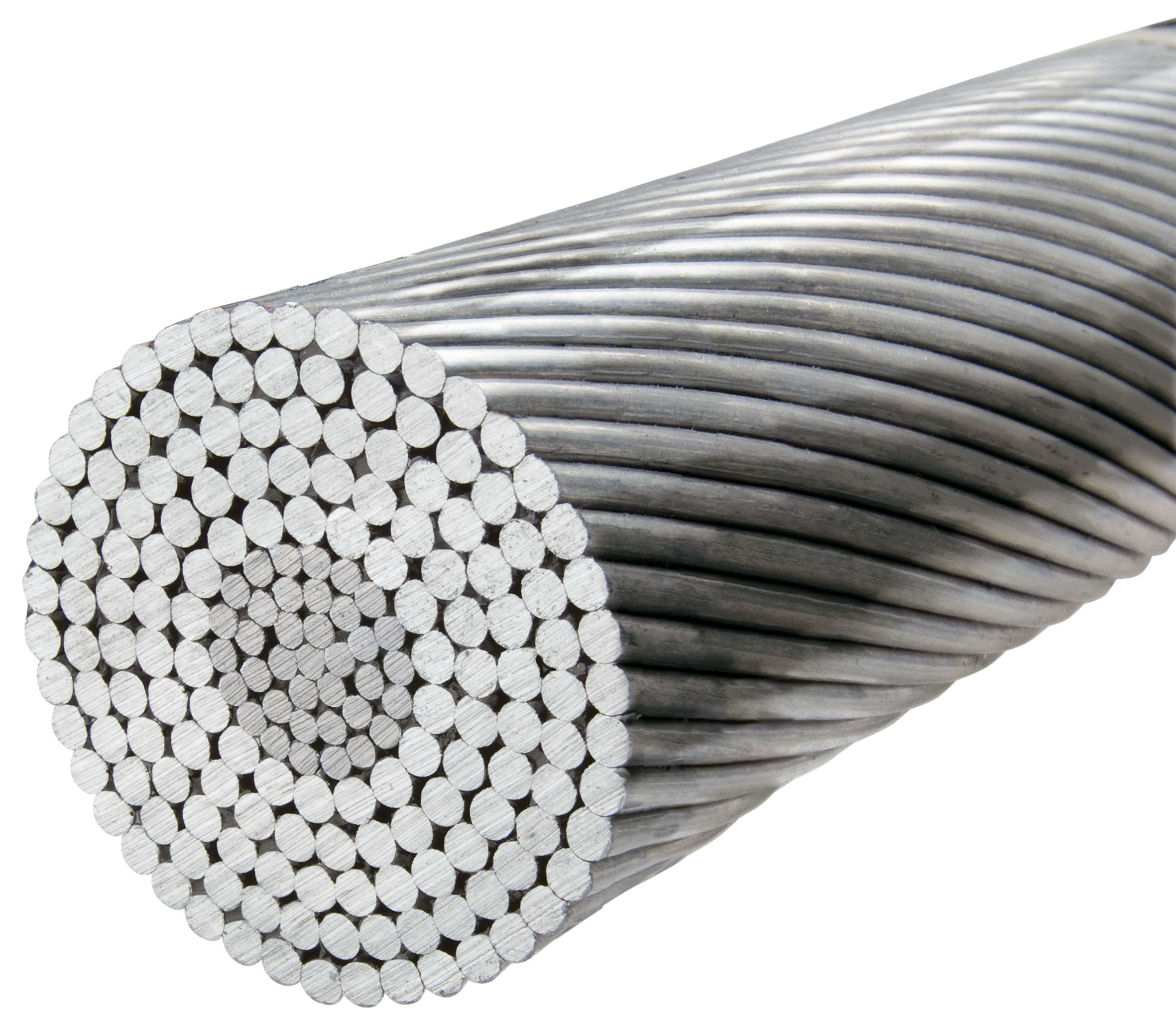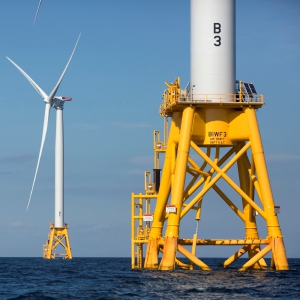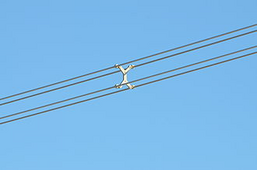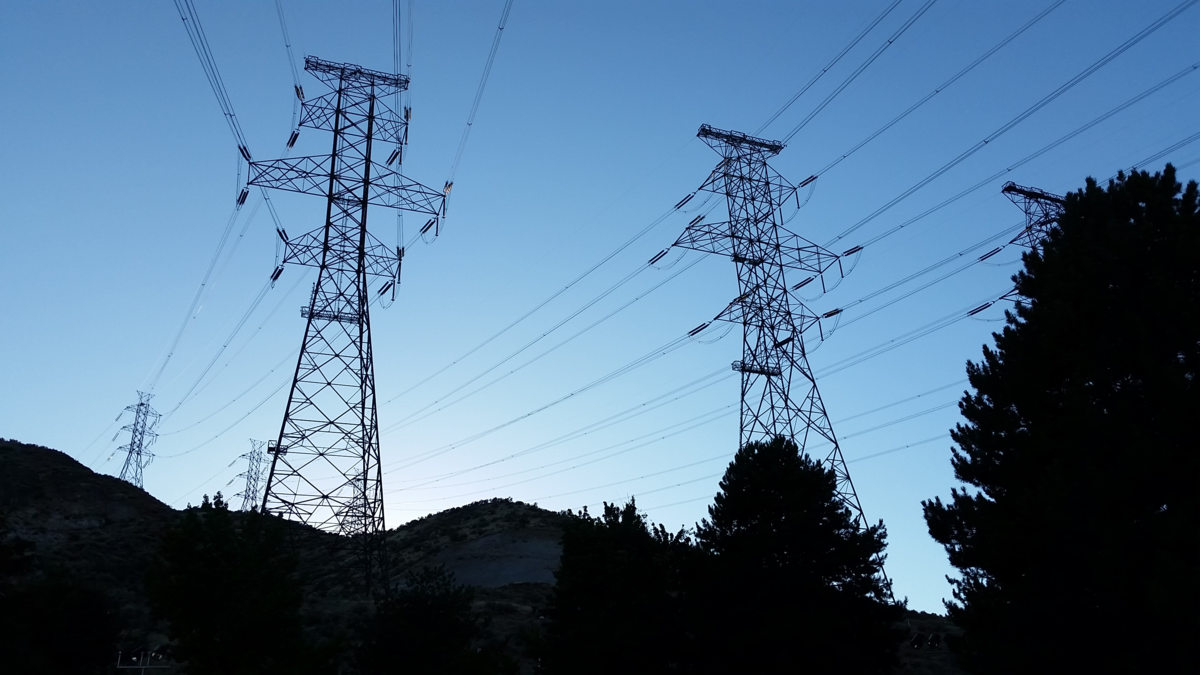That's a sneaky way to shift blame from renewables variability to "aging" grid. It was fine before renewables showed up. They should pay for grid updates, not ratepayers. But doing so would bust this myth that renewables are the cheapest energy source.
- The U.S.' aging infrastructure is struggling to keep pace with the rapid growth of renewable energy.
You are using an out of date browser. It may not display this or other websites correctly.
You should upgrade or use an alternative browser.
You should upgrade or use an alternative browser.
This Might Be The Fastest Way to Double U.S. Grid Capacity
- Thread starter crossy
- Start date
Hedges
I See Electromagnetic Fields!
- Joined
- Mar 28, 2020
- Messages
- 20,682
Our grid was overstressed and collapsed 25 years ago on the west coast.
Other than large solar farms (which need a feed in like any other generator), how do renewables, e.g. rooftop PV, require infrastructure upgrade?
It seems to me they reduce the power draw.
Other than large solar farms (which need a feed in like any other generator), how do renewables, e.g. rooftop PV, require infrastructure upgrade?
It seems to me they reduce the power draw.
Tmoney2007
New Member
- Joined
- Nov 26, 2022
- Messages
- 10
Are we going to factor environmental and climate impacts into the cost of other power sources as well?That's a sneaky way to shift blame from renewables variability to "aging" grid. It was fine before renewables showed up. They should pay for grid updates, not ratepayers. But doing so would bust this myth that renewables are the cheapest energy source.
The argument that infrastructure in this country ISN'T outdated and poorly maintained is a hard sell if you're being honest about it.
Sure lets widen the goalposts. We could have had nuclear powered grid without all these transmission upgrades but environmentalists are afraid of it and do their best to interfere.Are we going to factor environmental and climate impacts into the cost of other power sources as well?
Between to points but the grid has much more than two points, building dozens if not hundreds of DC convert stations blows any cost savings out of the water.High voltage DC is now the king for long distance.
I think the $ only works for losses and transfer limits when the DC line is in excess of say 200 miles over land and obviously much shorter when going under sea.
Example the Newfound to Nova Scotia Powerlink. This was a new tie between independent systems not replacing or upgrading existing tie.
If generators don’t run they don’t make money to turn over into maintenance costs. The lowest price always wins.Our grid was overstressed and collapsed 25 years ago on the west coast.
Other than large solar farms (which need a feed in like any other generator), how do renewables, e.g. rooftop PV, require infrastructure upgrade?
It seems to me they reduce the power draw.
Take a look at the issues that causes the Ercot black out a couple years ago. NERC has a nice 300 page public document.
Sure you can blame old school nat gas plants breaking, but it IMO the natural gas plants have been beaten up trying to compete with cheap renewables. Costs get cut maintenance gets deferred and bad stuff happens.
ACSS is replacing ACSR, least for med transmission voltages around here.Yes, tubes. So braid aluminum wires around steel cable.

ACSR conductor (Aluminum Conductor Steel Reinforced) / ACSR-AW - De Angeli Prodotti
ACSR conductor is the type of conductor most used worldwide and it is composed of a steel core and one or more hard drawn aluminum layers.www.deangeliprodotti.com
I think ionization isn't due to voltage, rather voltage gradient. Larger diameter should help with that.
3GW is a lot of power to step up/down.
wpns
Solar Joules are catch and release
At the end of the day, the only income stream the power company has is the rate payers, so one way or another the ratepayers are going to pay the cost of any grid upgrades.They should pay for grid updates, not ratepayers
Not sure in your neck of the woods but reconductoring around here is pretty much just as invasive as a new line, only difference is you already have an existing ROW and easement.This popped up on another forum, interesting concept.
Read more: -https://oilprice.com/Energy/Energy-General/This-Might-Be-The-Fastest-Way-to-Double-US-Grid-Capacity.html
- The U.S.' aging infrastructure is struggling to keep pace with the rapid growth of renewable energy.
- IEEE: improvements and replacements to the grid’s 8,000 power-generation units; 600,000 circuit miles of AC transmission lines and 70,000 substations to support increased renewable energy and battery storage could cost $2.5 trillion.
- Upgrading existing lines using advanced conductors actually costs less than half what a new power line would cost because it does away with much of the construction spending.
View attachment 198939
Roads need to be built (last time heavy equipment was in the ROW was 60-70 years ago when the line was constructed) and wetlands permits are needed. Also new conductor or larger conductor usually requires brand new towers/structures put in the ground to carry additional weight.
I’m sure cost and impact is a fraction out in the mid west corn fields, not so much in the North East.
Boost voltage? So taking a 115kv line and straight up converting it to a 345kv line actually will cause the need of a second conductor be strung per phase (not to mention each insulator needs to be changed out to protect the higher voltage) soon as you get to higher voltages not only does skin effect play a factor but so does corona emissions, simplest way to do that is dual conductor per phase.How about doing it the way we do, boost voltage and reduce current.
Assuming the towers are sound (not about to collapse due to pigeon poop like our bridges), evaluate each run to see if longer or otherwise higher voltage insulators can be used (or if other clearances are limiting factor.)
Change transformers for double voltage to allow 4x power transmission.
Maybe add some smarts for arcing detection, GFCI, which wasn't available when originally built.
So now you have twice the conductor in the air that requires twice the structural support. Twice the structural support prob needs wider ROW as spacing of conductors at 345 sure ain’t the same as 115. Right back to rebuilding a line plus a whole lot more.
Let alone all the 115kv breakers/busses and transformers then need to be converted at that station, you’re rebuilding the grid one station line at a time.
But it sure sounded easy to just say convert to higher voltages
ksmithaz1
Solar / EV Junkie
Boost voltage? So taking a 115kv line and straight up converting it to a 345kv line actually will cause the need of a second conductor be strung per phase (not to mention each insulator needs to be changed out to protect the higher voltage) soon as you get to higher voltages not only does skin effect play a factor but so does corona emissions, simplest way to do that is dual conductor per phase.
So now you have twice the conductor in the air that requires twice the structural support. Twice the structural support prob needs wider ROW as spacing of conductors at 345 sure ain’t the same as 115. Right back to rebuilding a line plus a whole lot more.
Let alone all the 115kv breakers/busses and transformers then need to be converted at that station, you’re rebuilding the grid one station line at a time.
But it sure sounded easy to just say convert to higher voltages
I'm missing something here. Why would boosting the voltage require a 2nd conductor?
So we have voltage based breakers on the grid? Sounds odd.
ksmithaz1
Solar / EV Junkie
DIYrich
Solar Wizard
Depends upon what agreements you have. Any "utility" with an obligation to delivery power upon demand has to demonstrate firm and reserve power to support the contracts it has.If generators don’t run they don’t make money to turn over into maintenance costs. The lowest price always wins.
Pre-deregulation, that would be your local utility has to have enough generating capacity available for its customers. In a deregulated environment, that obligation flows to whichever firm you have an agreement to buy their power (local utility only has an obligation to distribute the power delivered, but you can usually buy your power from them).
A generator can get a fee to provide firm and/or reserve power to a utility with an obligation to deliver power to a customer.
DIYrich
Solar Wizard
1) it is the solar and wind farms that need the additional transmission capacity.Our grid was overstressed and collapsed 25 years ago on the west coast.
Other than large solar farms (which need a feed in like any other generator), how do renewables, e.g. rooftop PV, require infrastructure upgrade?
It seems to me they reduce the power draw.
2) The addition of solar has led to the "duck curve", which requires a different type of generation. Transmission lines were built to serve the current power plants. If new on-demand plants are being built to match the Duck Curve needs, transmission lines are needed for those new plants.
DIYrich
Solar Wizard
Not sure in your neck of the woods but reconductoring around here is pretty much just as invasive as a new line, only difference is you already have an existing ROW and easement.
It is those ROW and easements that add years and costs to the process of building new lines.
Roads need to be built (last time heavy equipment was in the ROW was 60-70 years ago when the line was constructed) and wetlands permits are needed.
Less of an environmental issue if those roads are "temporary". In any case, new towers would be even worse.
Also new conductor or larger conductor usually requires brand new towers/structures put in the ground to carry additional weight.
According to the article, the new conductors are lighter, so no need for new structures. You might be able to add more lines in the process - 2 or more conductors where there used to be one.
ksmithaz1
Solar / EV Junkie
This makes the assumption the solar production is not distributed. No additional infrastructure was required, nor needed an upgrade when I put panels on my roof. Of course it does not protect the power generation / corporate interest either. Same reason we don't want to put in micro-nuke plants. The closer the generation is to the load, the less grid you need.1) it is the solar and wind farms that need the additional transmission capacity.
2) The addition of solar has led to the "duck curve", which requires a different type of generation. Transmission lines were built to serve the current power plants. If new on-demand plants are being built to match the Duck Curve needs, transmission lines are needed for those new plants.
It’s science, corona losses (ionized air) is a real thing.I'm missing something here. Why would boosting the voltage require a 2nd conductor?
So we have voltage based breakers on the grid? Sounds odd.
345kv is dual conductors, 765kv (majority of Hydro Quebec massive system) uses 6 conductors per phase.

Overhead power line - Wikipedia
And yeah bushings on breakers is def voltage based, those breakers housing and inerupters (what break current flow and arching) are grounded, higher voltage bigger insulators. Bushings on 345kv breakers are 8’ tall, 115 is more like 3-4’.
Agreed there are forward capacity markets but even then those can only do so much, older more traditional dispatchable units don’t clear more and more. Yet the new wind units get their slice of the pie.Depends upon what agreements you have. Any "utility" with an obligation to delivery power upon demand has to demonstrate firm and reserve power to support the contracts it has.
Pre-deregulation, that would be your local utility has to have enough generating capacity available for its customers. In a deregulated environment, that obligation flows to whichever firm you have an agreement to buy their power (local utility only has an obligation to distribute the power delivered, but you can usually buy your power from them).
A generator can get a fee to provide firm and/or reserve power to a utility with an obligation to deliver power to a customer.

Vineyard Wind paid for guaranteeing future electricity production
The nation’s first major offshore wind farm, the under-construction Vineyard Wind off Massachusetts, has shown up in an important, if obscure, location.The project is one of more than 900 energy providers of various types who won bids to receive...
 www.concordmonitor.com
www.concordmonitor.com
Utilities that are deregulated usually only buy 6mo blocks per local regulatory rules in the hope prices will always be cheaper.
Last edited:
Hedges
I See Electromagnetic Fields!
- Joined
- Mar 28, 2020
- Messages
- 20,682
I would have thought the multiple conductors was just to reduce resistance, but these four wires held in a square or more for hex etc. bundle approximate a larger diameter conductor, probably reduces voltage gradient to reduce corona discharge. Field from the wires merge into one.
Lets wind through better than a large pipe.
Obviously not a field I've worked in before, but now that it has been brought up, makes sense.


Lets wind through better than a large pipe.
Obviously not a field I've worked in before, but now that it has been brought up, makes sense.





